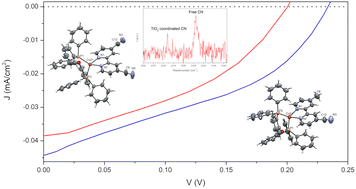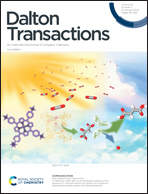Syntheses, characterization, crystal structures and applications as sensitizers in solar cells of novel heteroleptic Cu(i) complexes containing nitrile-substituted 2,2′-bipyridyl ligands†
Abstract
Two novel Cu(I) tetradentate heteroleptic complexes, including nitrile-substituted bipyridines that can be anchored to semiconductor surfaces to be assembled in DSSCs, were synthesized and characterized by spectroscopic and electrochemical techniques. The crystal structures of both species were determined by X-ray diffraction. Results from DFT and TD-DFT calculations were found to be consistent with the experimental data. Emission at room temperature was observed for both complexes in the solid state, making them promising alternatives for the development of light-emitting diodes. We report for the first time the experimental evidence of photovoltaic conversion devices formed by Cu(I) complexes anchored to a TiO2 surface by means of nitrile groups present in substituted bipyridines, and subsequently tested as sensitizers for DSSCs, obtaining efficiency values for light to electrical energy conversion similar to those previously reported for analogous complexes with anchoring carboxylic groups.



 Please wait while we load your content...
Please wait while we load your content...